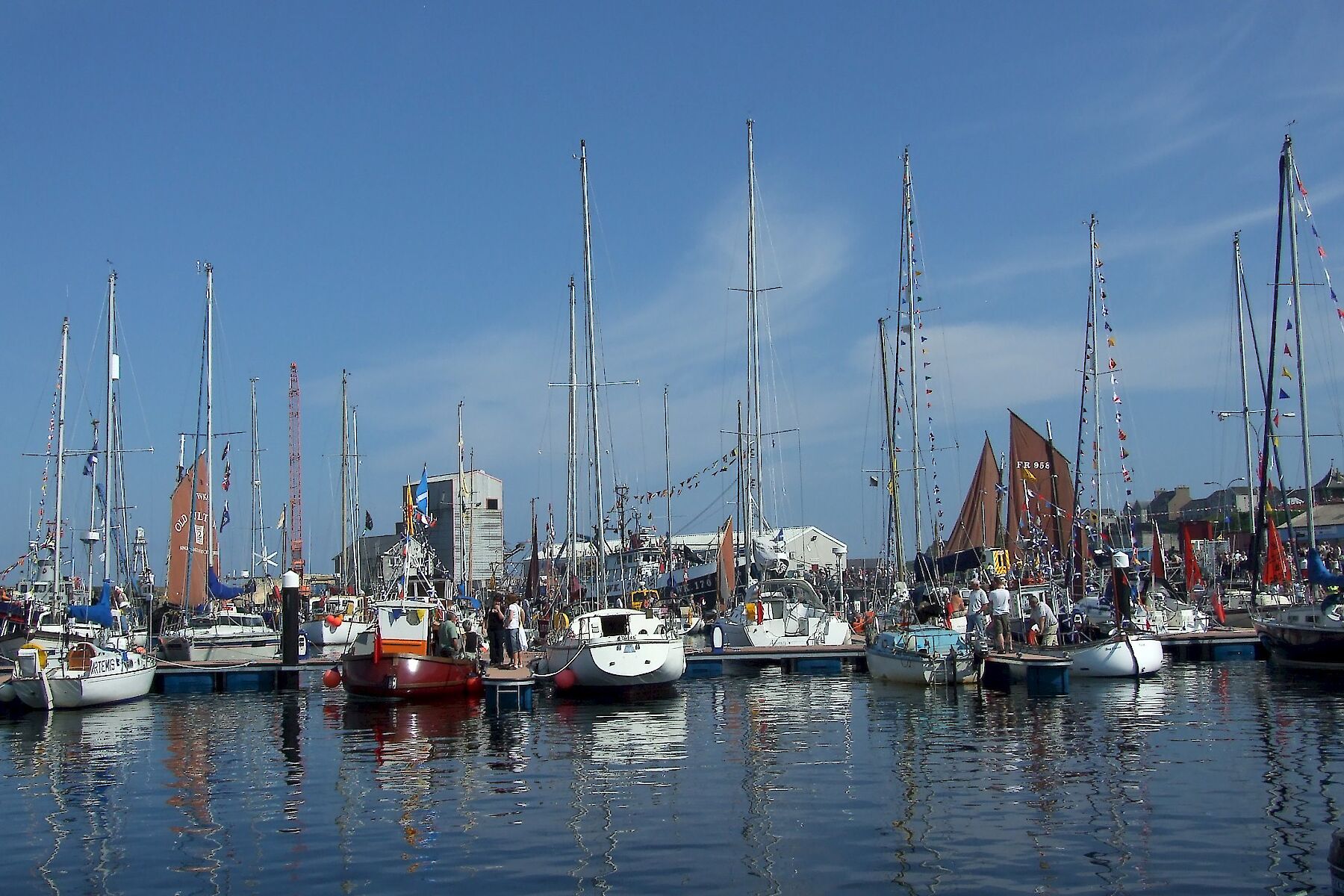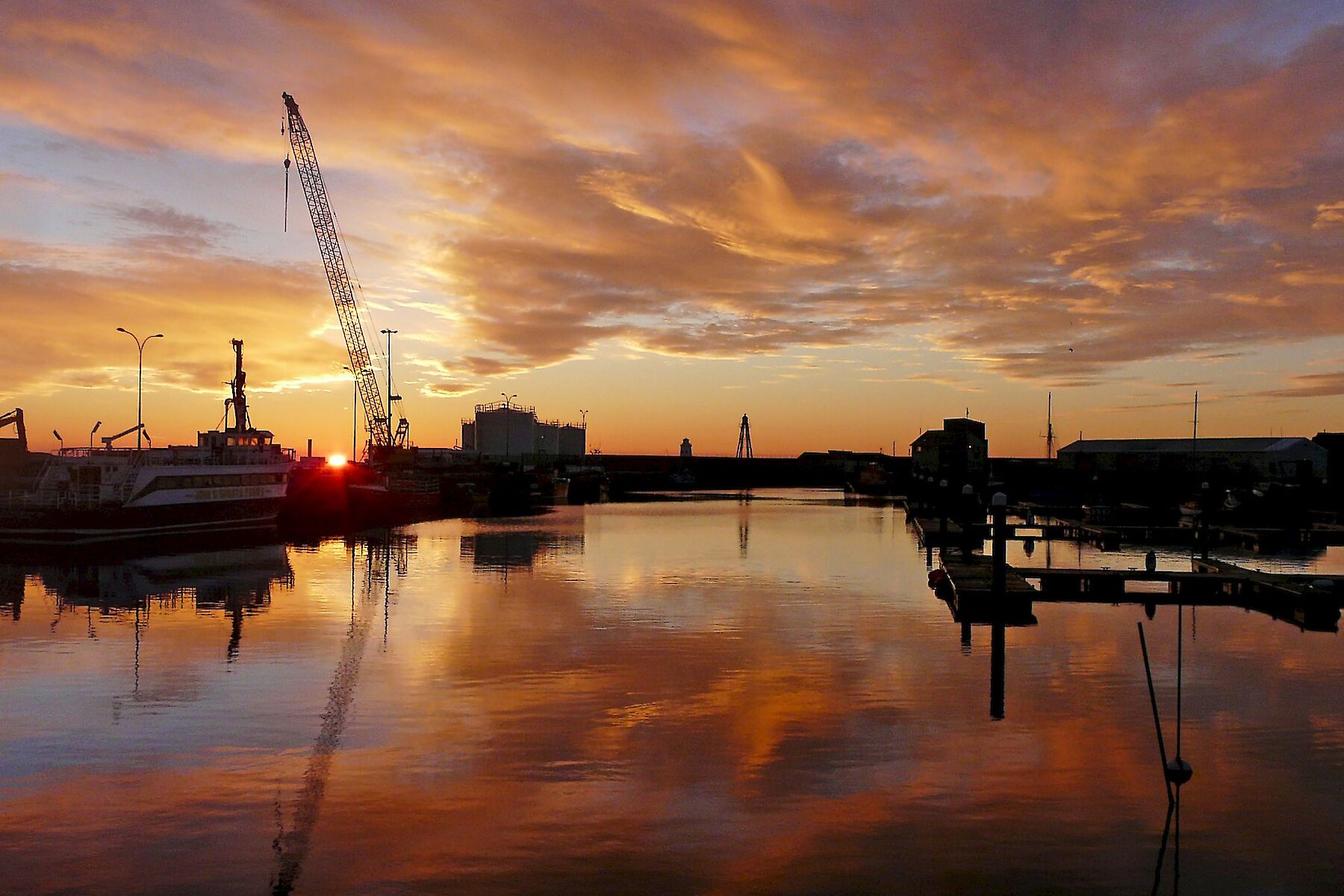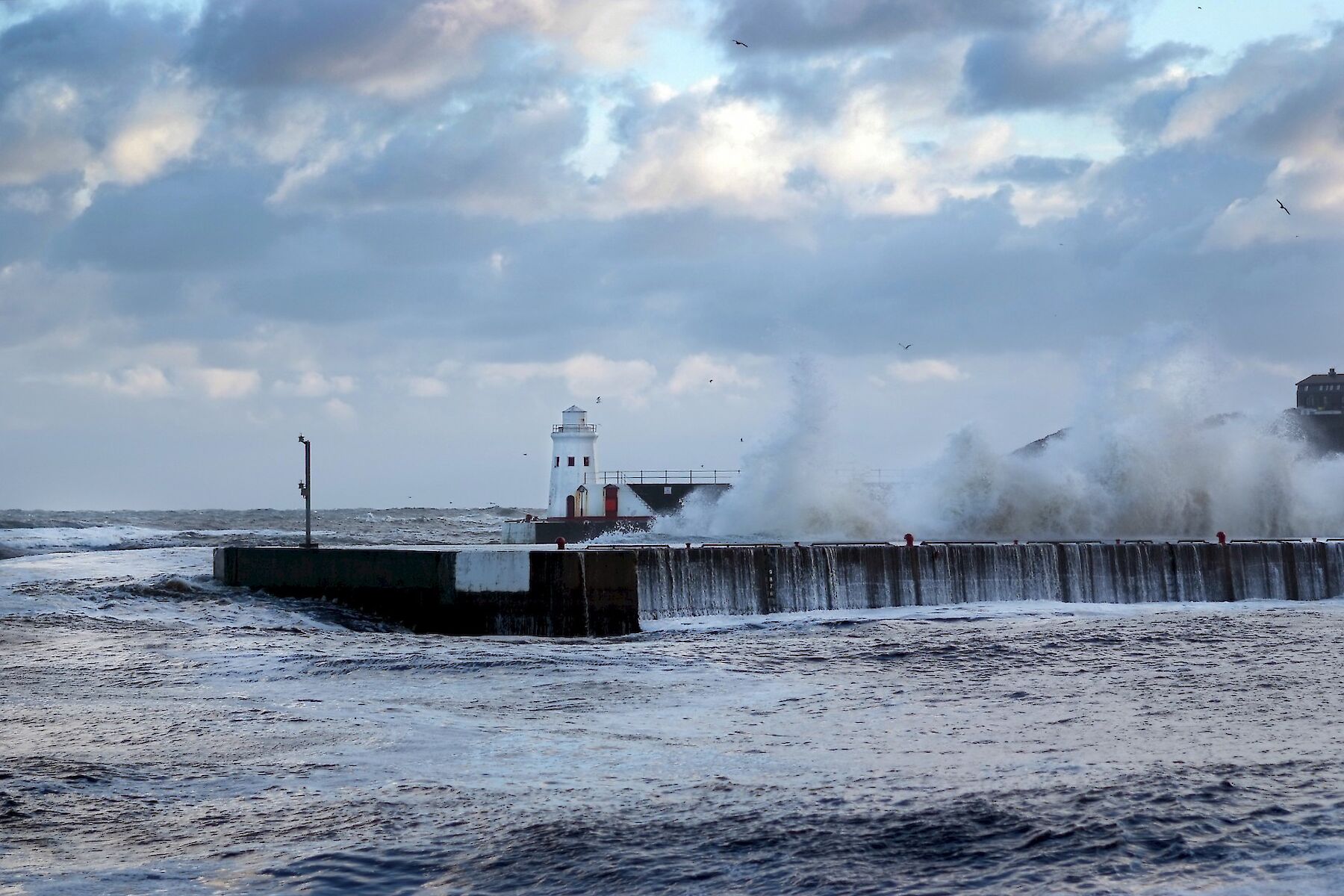The Inner Harbour on the south (Pultneytown) side of Wick Bay was built in 1808 by The British Fishery Society designed by George Burn. By 1818 there were 822 boats prosecuting the herring fishing from Wick and the harbour was reconstructed by Thomas Telford in 1824-31. By 1860 the fishing was reaching its peak when records show that 1100 vessels were engaged in the summer herring fishing season.
Yet further improvements were made in 1862-7 when the Outer Harbour to the south east was begun and the South Pier built, designed by D and T Stevenson. Later in 1882-7 the Outer Harbour was improved to offer more protection when James Barron extended the South Pier and added a breakwater to the Inner Harbour's North Pier. At the same time the old part of the North Pier was broadened and a new harbour (the River Basin) formed at the mouth of the Wick river by the construction of the South River Pier.
Men and Women came from all over the Highlands and from the Western Isles to crew the boats and to work in the herring curring yards. The women worked in crews of three (two gutters and one packer) to prepare the herring to be shipped in barrels to ports across Europe.
Wick produced one fith of the country's landings at one time but by the 1930s herring became scarce and the fishermen began to turn to the emerging seine net fishing for white fish as it offered more permanent employment.
The Wick Heritage Museum has extensive displays of herring-related activity including coopering, kippering, fishing and trading.
Categories
MaritimeContact Details
Wick Heritage Museum
Opening Times
Always open
Location Information
Area: Caithness East
OS Grid Reference: ND 3680 5060
Accessibility Information
Parking is available by the harbour. Easily accessible.



